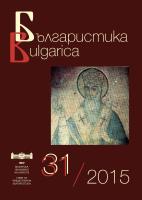
Научни форуми. 2015 г.
Data about scientific events in the field of the humanities in Bulgaria in 2015
More...We kindly inform you that, as long as the subject affiliation of our 300.000+ articles is in progress, you might get unsufficient or no results on your third level or second level search. In this case, please broaden your search criteria.

Data about scientific events in the field of the humanities in Bulgaria in 2015
More...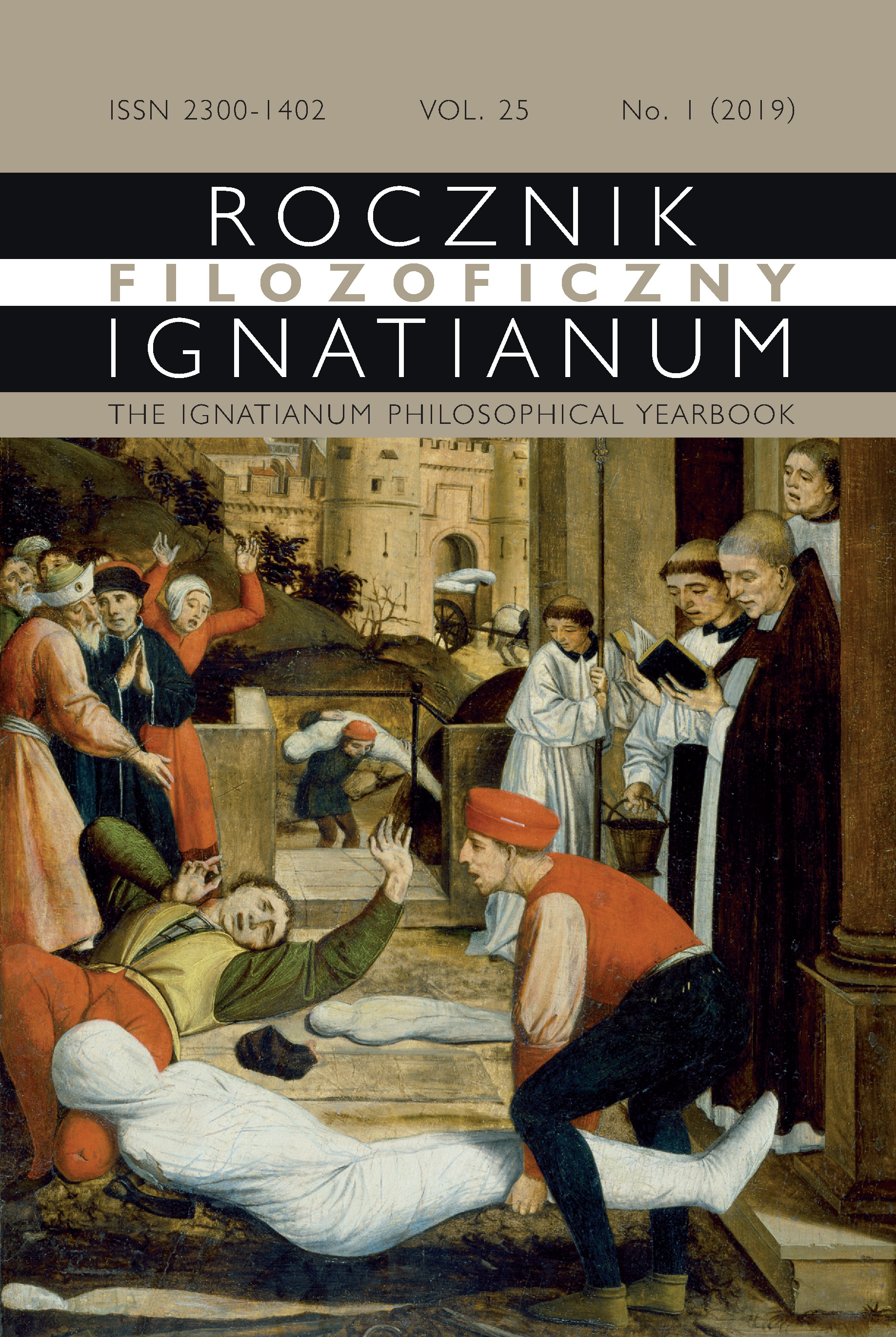
The aim of this article is to present the person and achievements of Miralay Bonkowski Pasha (1841–1905), an Istanbul-born scientist and lecturer of Polish descent, about whose life little is known. Bonkowski’s articles and reports in nineteenth-century periodicals such as: Gazette Mediale d’Orient (1868–1904); Journal de la Société de Pharmacie de Constantinople (1879): L’Osmanlı (1884–1885) and Revue Medico-Pharmaceutique 10/3 (1888–1897) constitute the source basis of this article. The literature used in the paper thereof consists of historical studies (including those related to the history of pharmacy) and takes into account the latest state of scientific research, published mainly in Turkish, but also in Polish. This paper uses the method of historical analysis of sources, mainly journal articles and reports, in the context of properly selected historical literature. In the light of the sources and studies, Bonkowski appears to be a socially committed scientist, taking into account a modern perspective in his research, perfectly combining scientific theory with practice. Bonkowski sought to combine science and practice with the common good in mind, bringing chemistry issues into everyday practice and offering innovative and practical solutions in this regard. Thanks to his knowledge and skills, he was appointed by the state authorities to many commissions aimed at solving key current problems, such as: raising the level of public health (e.g. by analyzing water, food, or medicines), fighting infectious diseases (cholera epidemic), protecting vineyards from destruction due to disease, initiating the production of rose essence (a cosmetic widely used in the Ottoman state). Bonkowski, the first chemist-in-chief of the Ottoman palace, worked for many years in various institutions and organizations of the Ottoman state, played a key role in the establishment and development of public health, chemistry, and pharmaceutical professions in the Ottoman state. He made a breakthrough in the field of health. At the same time, with his chemical research and his studies of infectious diseases, especially cholera, he made significant contributions to Turkish science.
More...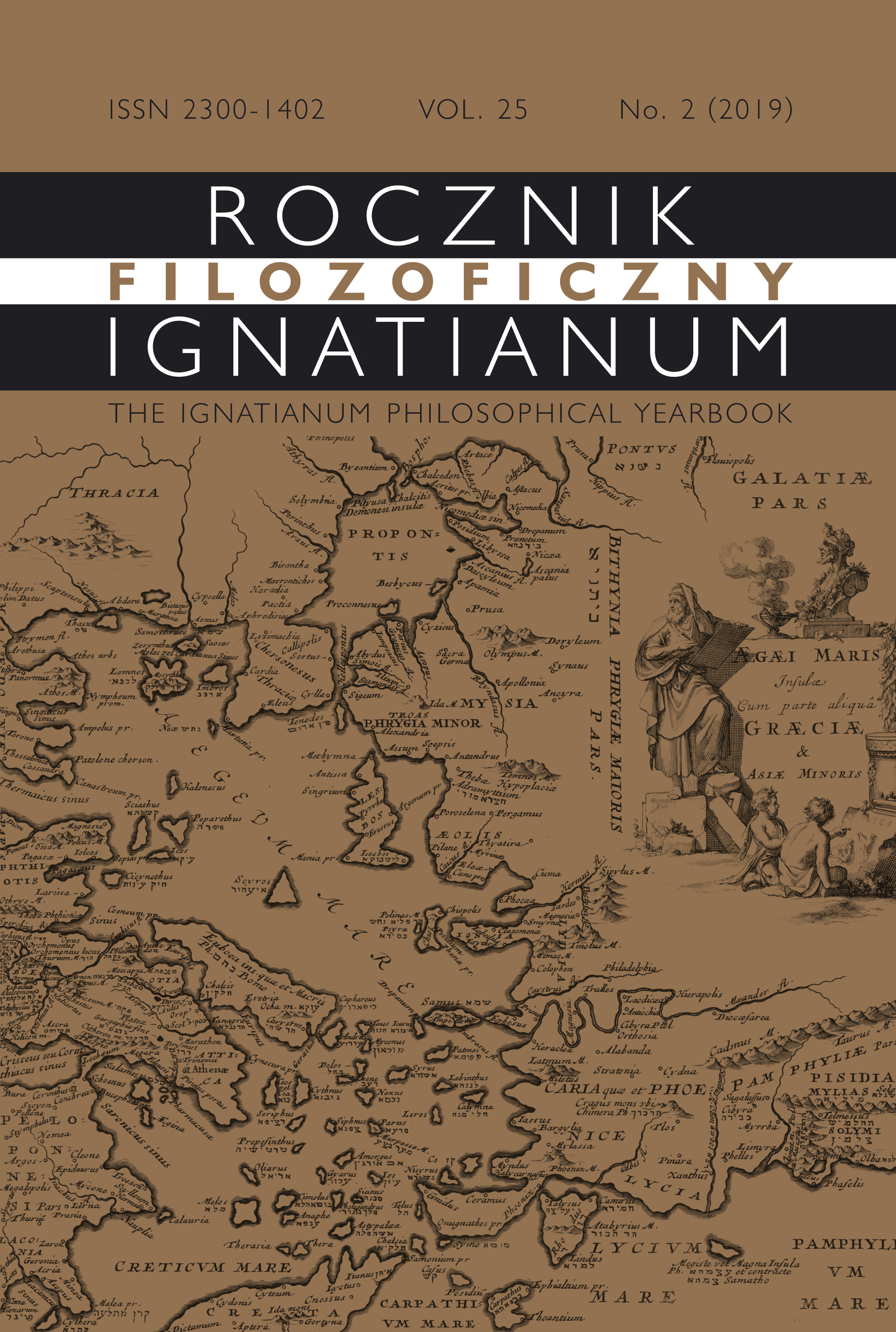
In the article “Settlement on Lusignan Cyprus after the Latin Conquest: The Accounts of Cypriot and other Chronicles and the Wider Context” the narratives of various chronicles of the thirteenth to the sixteenth centuries on settlement in Cyprus in the years following the Latin conquest, from the end of the twelfth to the early thirteenth century, will be examined and compared. The details provided by the chronicles, where the information given derived from, the biases present in the various accounts, the extent to which they are accurate, especially in cases where they are corroborated or refuted by documentary evidence, will all be discussed. The chronicles that will be referred to are the thirteenth century continuation of William of Tyre, that provides the fullest account of the settlement of Latin Christians and others on Cyprus after the Latin conquest, the fifteenth century chronicle of Leontios Makhairas, the anonymous chronicle of ‘Amadi’ that is probably dateable to the early sixteenth century although for the section on thirteenth century Cypriot history it draws on earlier sources and the later sixteenth century chronicle of Florio Bustron. Furthermore, the Chorogra a and the Description of Stephen de Lusignan, two chronicles postdating the conquest of Cyprus by the Ottoman Turks in 1570, will also be referred to on the subject of settlement in thirteenth century Cyprus. By way of comparison, the final part of the paper examined the extent to which the evidence of settlement in other Mediterranean lands derives chiefly from chronicles or from documentary sources. In conclusion, it can be stated that the various accounts of settlement on Cyprus following its cession to King Guy of Jerusalem in 1192 show differences in terms of the value of the fiefs, the geographical regions from which the settlers came and the types of properties which were granted to them. The Latin kingdom of Jerusalem resembles Cyprus in that the source material for early Latin settlement is narrative, not documentary. But this is not the case for the Venetian Crete and the Hospitaller Rhodes, where the source materials recording the arrival of the first Latin settlers are wholly documentary.
More...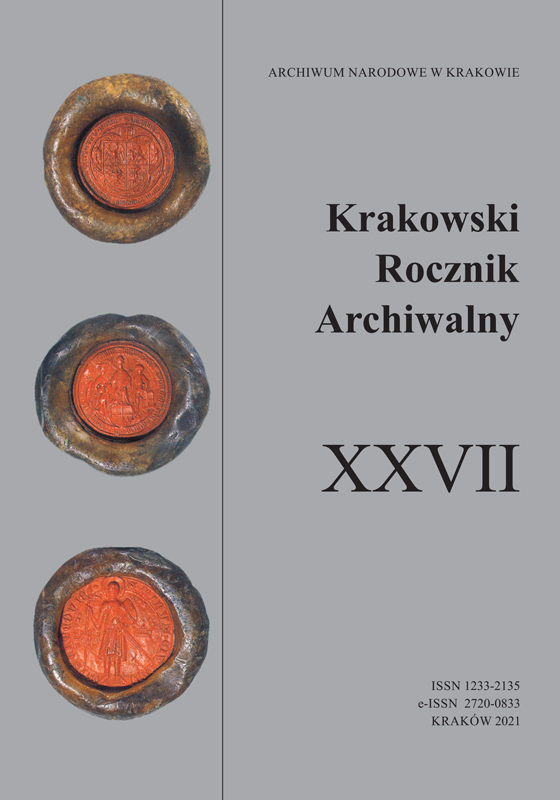
Established by the Town Council in 1887, the Krakow Town Archives of Former Records enriched its resources thanks to donations from inhabitants – both archival materials or museum items, and books. However, operating from 1878, the Local Archives of Records of the Courts for the Nobility in Krakow, under the Galician authorities, only began to obtain the trust of benefactors after it was taken over by Polish authorities in 1919. These activities continued from 1952 in the form of the State Archive of the Krakow Province, founded through a merger of both archives (currently the National Archives in Krakow). Supporting the museums and libraries founded in Krakow in the 19th century that collected souvenirs of the past greatness of the Republic was regarded as a patriotic duty, providing an opportunity to safeguard for future generations family documents, materials created by those active in various fields or institutions and organisations which have ended their activities. The Archives always gratefully accepts donated archival materials connected with Krakow, Malopolska or Galicia, as the mission of the state archives is to store all archival materials that could be a source of information concerning the history of Poland and its inhabitants.
More...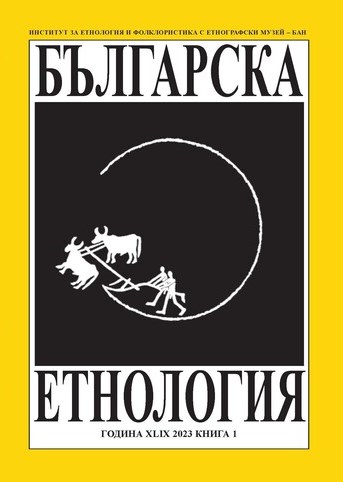

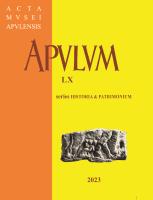
The current paper aims to introduce one of the first incunabula printed by Johannes Gutenberg, namely, the Türkenkalender. The six folio calendar was printed in December 1454, in order to be in use during the following year, 1455. According to Gutenberg´s intention, the Türkenkalender was intended to be a warning against the Ottoman danger shortly after the fall of Constantinople on May 29th 1453. The paper also includes contemporary testimonies about the last days of the Byzantine Imperial capital from two different witnesses, both members of the high clergy, one of them being Leonard Archbishop of Mytilene in Chios, and the other one being Isidore Metropolitan of Kiev. They belonged to those European writers who called the sovereigns as well as the nobility of Europe to defend Christianity. Following the same path and the same message, the inner structure of the Türkenkalender (or Calendar turcesc as it is also known in Romanian) includes twelve separate poems arranged at the beginning of each of the twelve months of the year, poems aimed to persuade the European rulers to take actions against the Turks. At the end of the calendar, Gutenberg included the oldest formula ever printed of the New Year greetings – Eyn gut selig nuwe Jar.
More...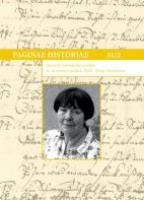
Hynek Kollmann (1864–1938) is permanently linked to the Czech Lands Archives in Prague where he spent most of his professional life (even was appointed its titular director) and to the archival research in Rome. Unlike the majority of researchers, Kollmann did not address himself to the Vatican fonds but rather to the unexplored Congregatio de Propaganda fide archive where he discovered an extraordinarily valuable collection of sources about the re-Catholicisation of Central Europe in the 17th century. He earned international renown for his extensive – unfortunately incomplete – edition Acta Sacrae Congregationis de Propaganda fide res gestas bohemicas illustrantia (1923–1954).By way of Kollmann’s example, the study seeks to capture the lifestyle of the most agile archive researchers who set out to Rome from Bohemia in the late 19th and early 20th centuries, acting as short time go-betweens for the Bohemian intellectual society and Italian milieu. The analysis of Kollmann’s fragmentary estate, deposited in the National Archives in Prague (namely his diaries from 1891–1892 with regard to his correspondence), uncovers a multipotential person – a traveller with geographical and historical horizons; a perceptive observer of past relics as well as political, social, and economic changes in Italy; and a person with extensive social contacts. During his sojourns to Rome, Kollmann built a network of contacts in several aspects. First of all, he settled in the Bohemian community in Rome that revolved around two centres: Bohemicum, a college for Bohemian theologians with the crucial Vice-Rector František Zapletal (Kollmann’s friend and intermediary within Catholic hierarchy), and a group of artists working in Palazzo Venezia (where the successful painter Beneš Knüpfer, another friend of Kollmann, left a significant trace). His relationship with the representatives of Austrian diplomacy and the Austrian Historical Institute (especially Theodor von Sickel, director of the latter) were rather formal for he argued with them about Czech-German relations and the development of the Habsburg Empire. Kollmann established live contacts with the inhabitants of Rome who enabled him to gain knowledge about everyday life in the Italian metropolis and about the tension between the adherents of papal curia and the royal court.Kollmann’s acquaintance with Bohemian politicians arriving in Rome was of special significance; he was their guide conversant with the local environment and a go-between especially in relation to the ecclesiastical circles. Among Kollmann’s short-time clients were the deputies of the Bohemian and Moravian diets, including the long-term Bohemian political leader František Ladislav Rieger. In relation to them, the conservative Catholicism and strong Bohemian patriotism of Hynek Kollmann manifested itself and strengthened.
More...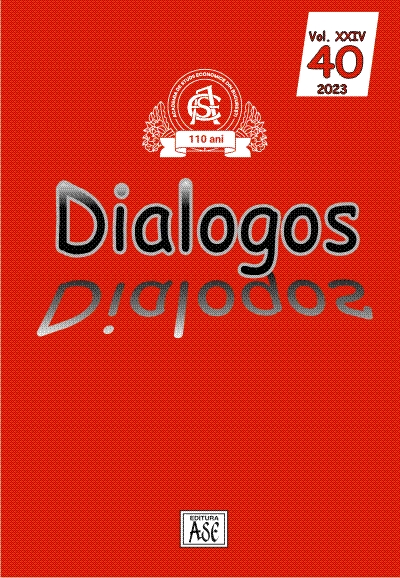
This paper aims to get an insight into students’ perceptions regarding hybrid learning/on-line learning, in the aftermath of the COVID pandemic. This seems to be increasingly important, as decision-making in any university takes into account the viewpoints of all the important stakeholders, in this particular case, professors and students alike. In this research study, I focused on the first year students of only one faculty of Bucharest University of Economic Studies, namely International Business and Economics.
More...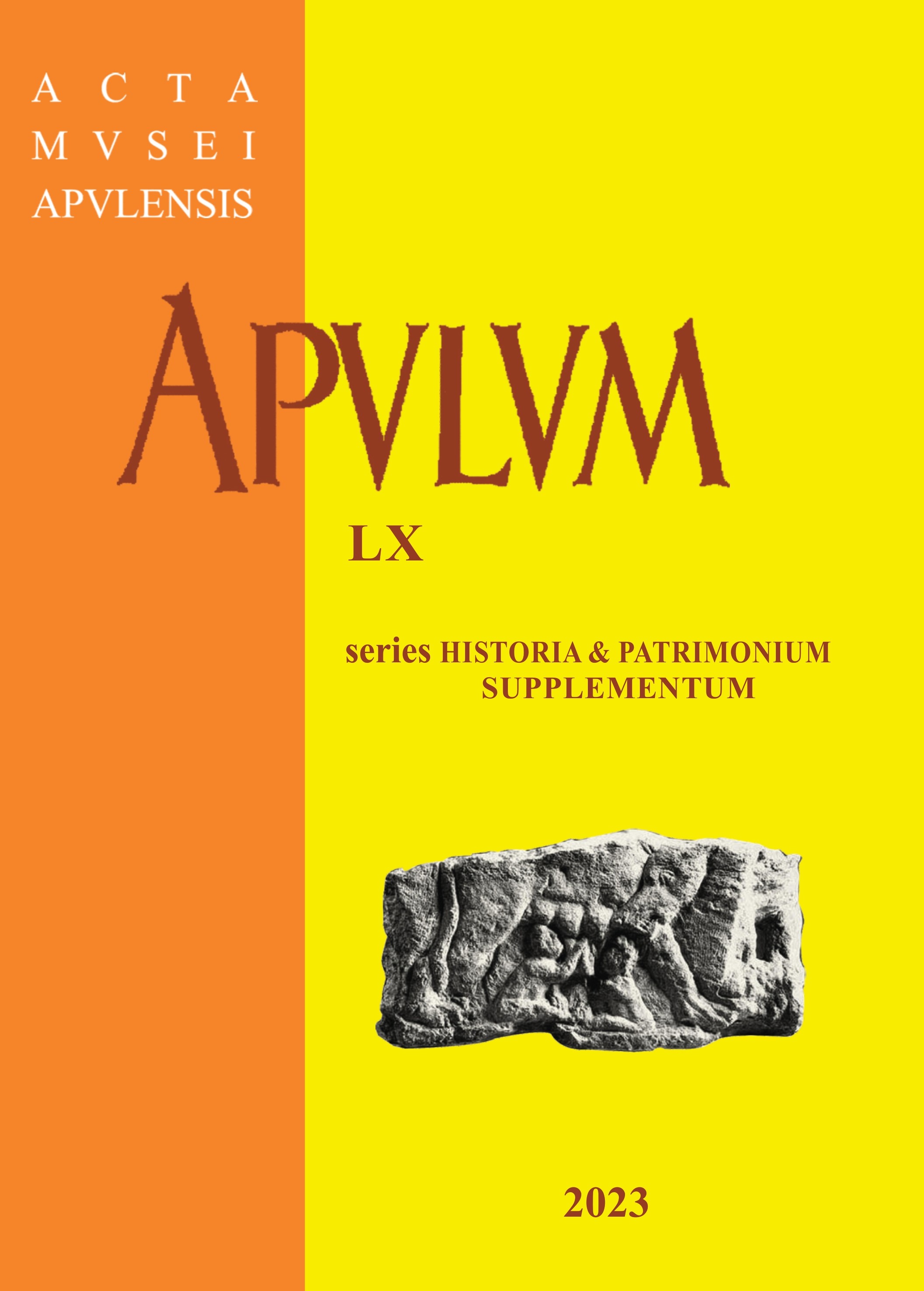
Digitisation and digitalization are both processes that have taken research into a new dimension and a hotly debated topic in the global and national specialised milieus. Digitisation of cultural and scientific assets as a means of preserving identity, as a support for future research, is just one facet of the current cultural strategies that are developing worldwide. Since 2008, we have been discussing also in Romania the institutionalisation of the effort to preserve and enhance the Romanian cultural heritage through digitisation. In this context, libraries, as institutions at the forefront of these transformation processes, have rethought their presentation profiles and accessibility paths in order to keep pace with the technological development of society and new generations of users. Digitisation, as the priority stage of preserving and opening up access to knowledge, was followed by digitalization, the higher stage in which the evolution of software technologies enabled the connection and processing of information and the way it was accessed. Following the evolution of digitisation and digitalization processes in our country, we propose in this paper an insight into the digital collections of old books of one of the most representative institutions of culture and education – the Central University Library "Lucian Blaga" in Cluj-Napoca, which has stood out for the rigour and constancy of its efforts in this field that has raised multiple challenges.
More...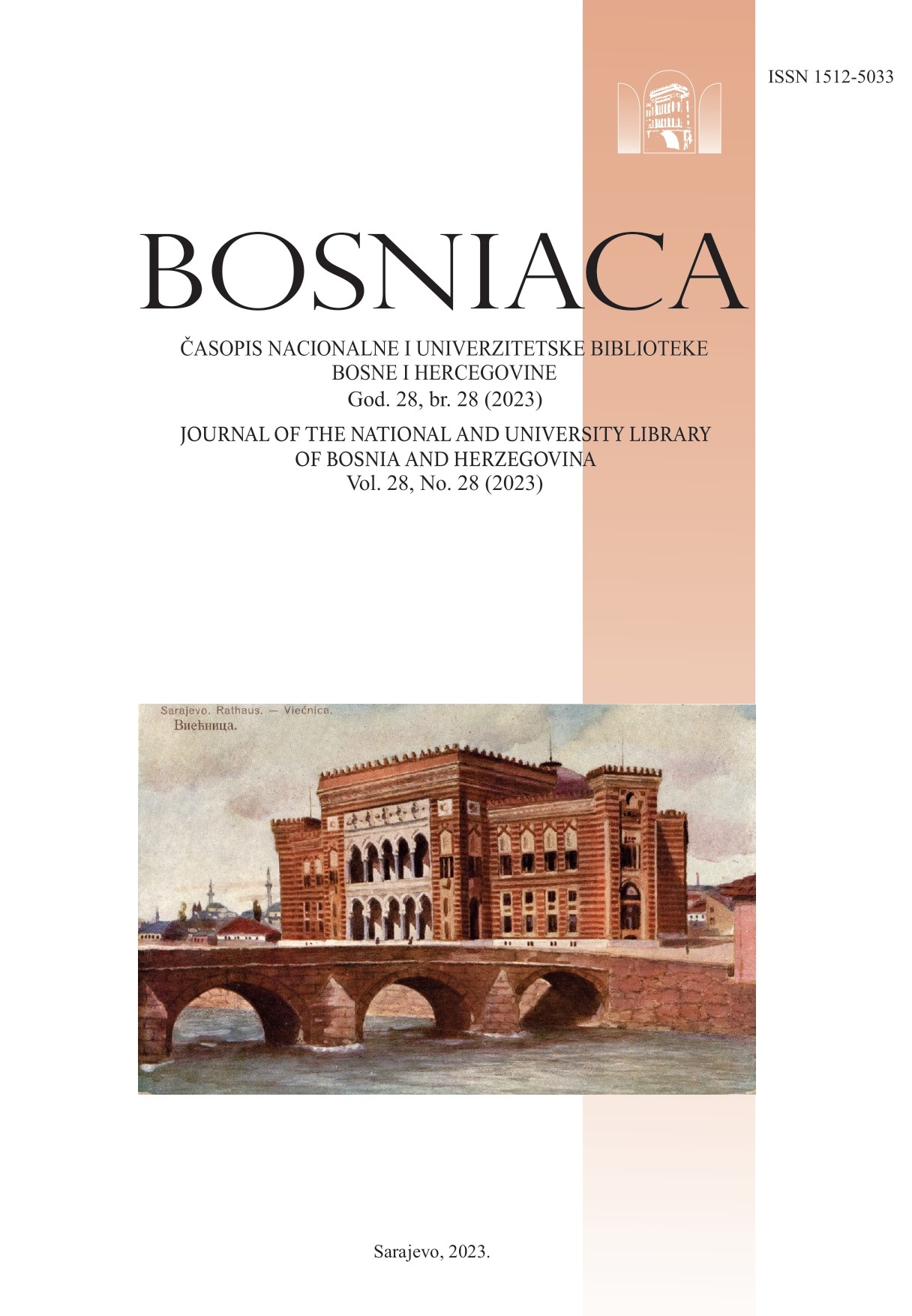
This paper represents the conservation-restoration process of the oriental manuscript in the Turkish language, Aṭ-Ṭāriqa al-Muḥammadiyya. The manuscript is stored in the library of the Tekke Mesudija which has very important old and rare book materials, among which oriental manuscripts hold a special place. The goal of the restoration was to restore the functionality of the binding and preserve the texts. The restoration treatments included: mechanical and chemical cleaning of the pages, repairing a missing portion of a page with Japanese paper, sewing the forms into the bookblock, embroidering the endband, and restoring the original covers. Conservation-restoration documentation with a proposal on the handling and preventive conservation of manuscripts was also prepared.
More...
In the article, the authors present the historical sequence of the publication of the monuments of the University of Zagreb from 1875 to 2019, their content, and their significance for history, culture, and science. Using the method of gathering digital objects through normative records from the UNIMARC format and the semantic web, which is within the capabilities of the Vizbi.UNIZG platform, will also show the bibliographic processing of digital objects of the University’s monuments and its components, according to the types of materials in the digital platform Vizbi.UNIZG, and the possibility of the UNIMARC format on to whom they are described. The user interface and presentation of the collected monuments, components, types of materials, authors, and corporate bodies responsible for the creation of monuments will be analyzed. The advantages of the digital environment in the presentation of materials, ensuring availability will be pointed out. The discussion will consider the significance of the selected model through theoretical analysis of the UNIMARC format and related data.
More...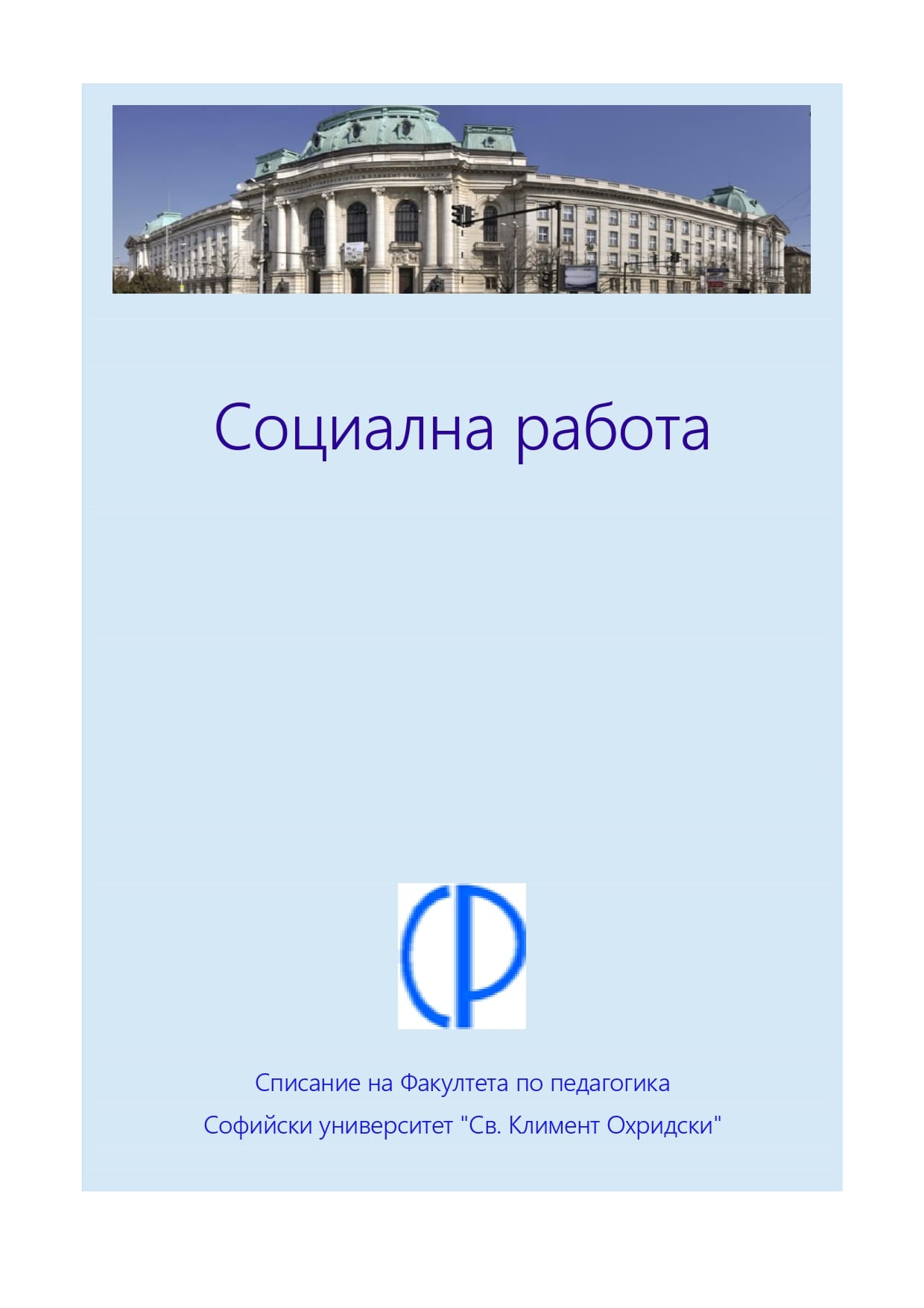
This article presents the findings of a survey focused on elucidating the attributes, merits, and utilization of electronic scholarly journals in the context of social work education. The theoretical underpinning of this study centers on the recognition of knowledge as a fundamental right and underscores the contemporary societal and educational significance of free knowledge access. Data for this research was collected through two distinct questionnaires, one administered to students (n=115) and the other to educators (n=32). The analysis of the data reveals that students exhibit a noteworthy proclivity for employing electronic periodicals in their current academic endeavors, notably in the preparation of written papers and presentations, registering elevated usage rates. Moreover, the survey underscores that educators predominantly leverage electronic scholarly journals with the dual purpose of enhancing their personal awareness of emerging studies, topics, and researchers, as well as for disseminating their own research findings. The data acquired unequivocally affirms the intrinsic value and inherent advantages of open access, cost-effectiveness, and expeditious dissemination in the realm of publishing and researching scholarly content online.
More...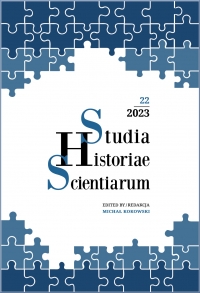
The article presents: a) updating the rules for evaluating journals in the evaluation model developed in the Pracownia Naukoznawstwa IHN PAN (Science Studies and Science-of-Science Unit of the Institute for History of Science, Polish Academy of Sciences), b) scoring journals in the history of science according to the lists of journals of the MNiSW (2017), MEiN (2021), MEiN (2023), PN IHN PAN (2022) and PN IHN PAN (2023), c) comparison of the scoring of journals in history and history of science in the lists of journals: ministerial and PN IHN PAN, as well as Scopus, DOAJ, Index Copernicus International, PKP Preservation Network and Keepers Register.The conclusion of the article is an open appeal to the Minister of Education and Science to award, in the next update of the ministerial list of journals, 200 points to the journal “Studia Historiae Scientiarum” and 140 to the journal “Kwartalnik Historii Nauki i Techniki”, because these journals, devoted to the history of science, are not inferior in terms of achievements to Polish historical journals, which have already obtained 200 and 140 points by the decision of the Minister of Education and Science of July 17, 2023.
More...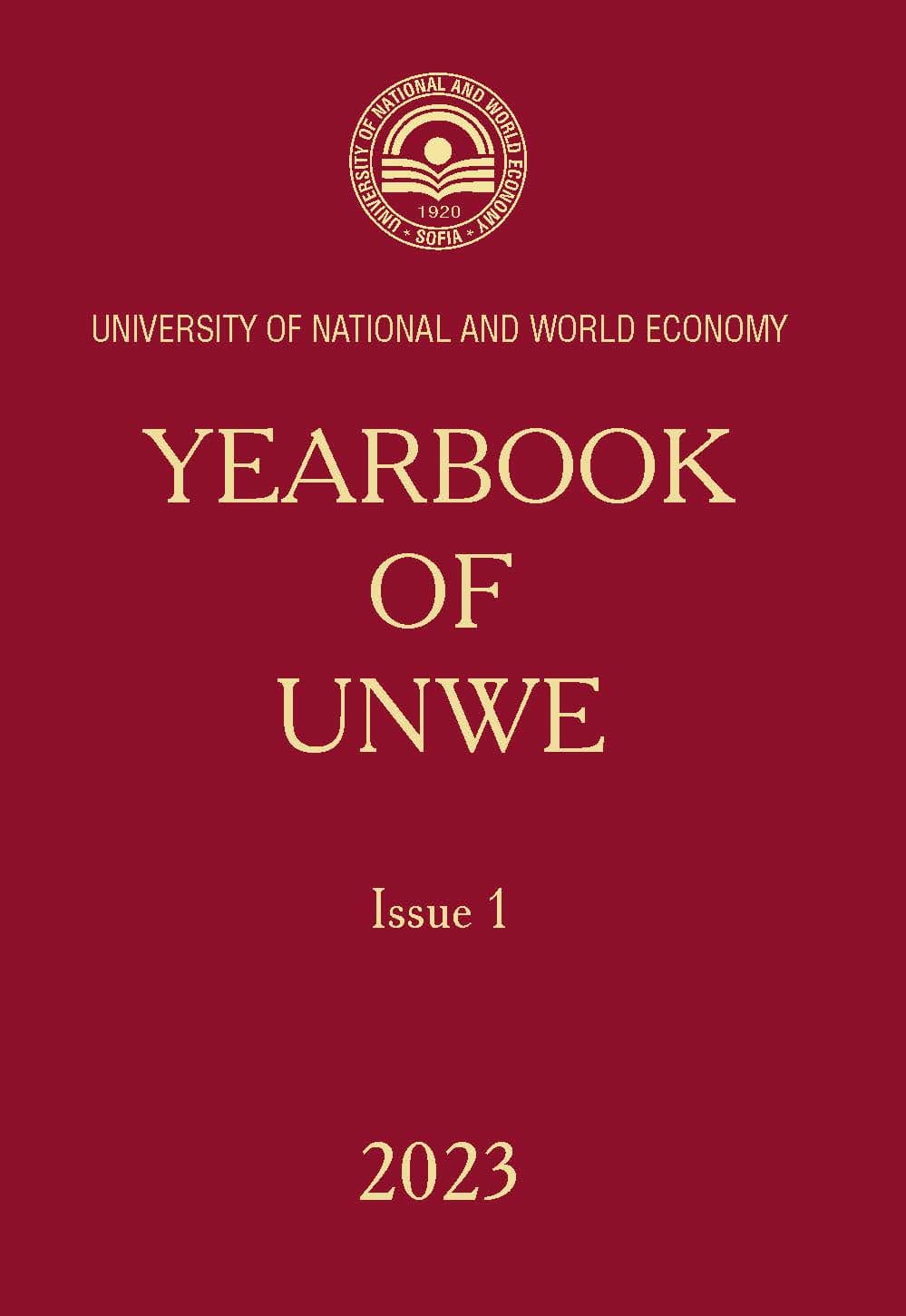
This article presents a methodology for the implementation of Digital competence framework (DigComp 2.1.), verified and approved in Bulgaria. DigComp is a critical tool to understand digital competence, to increase mobility and educational opportunities; to help empower individuals with digital skills, required to the needs of job market. This methodology is part of a national initiative2 for development of digital competences through the implementation of DigComp 2.1, which aims to overcome the imbalance between the digital knowledge and skills of the workforce.
More...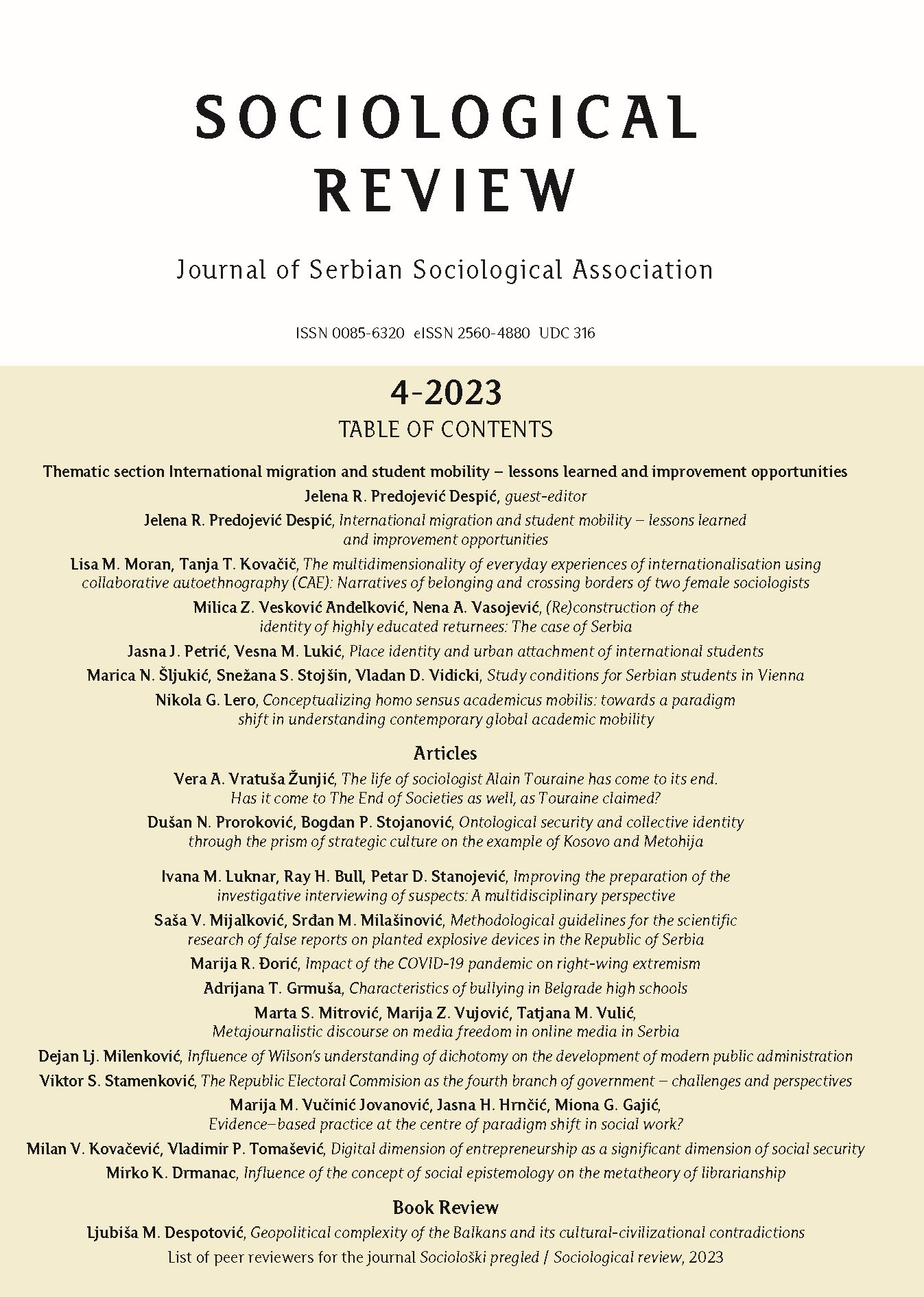
This paper will consider the formation of the theoretical-methodological concept of social epistemology as an attempt to determine the scientific status of librarianship in the conditions of the scientific-technological revolution and under the influence of the sociological ideas of the Chicago School. The emergence of the first computers, new information media and electronic networks was accompanied by the fear that the book would be overcome and that librarianship would be a superfluous and anachronous activity. Jesse Hauk Shera, the founder and leading supporter of social epistemology tried to offer it as an alternative to the classical theory of librarianship. The analysis of Shera’s and other relevant works offers insights about this concept, although conceived within theoretical librarianship, not being complementary to traditional professional specifics. Although today social epistemology is accepted as a philosophical theory of cognition, in the context of librarianship and information science, it has not solved the problem of the scientific and professional identity in the conditions of modified technological reality.
More...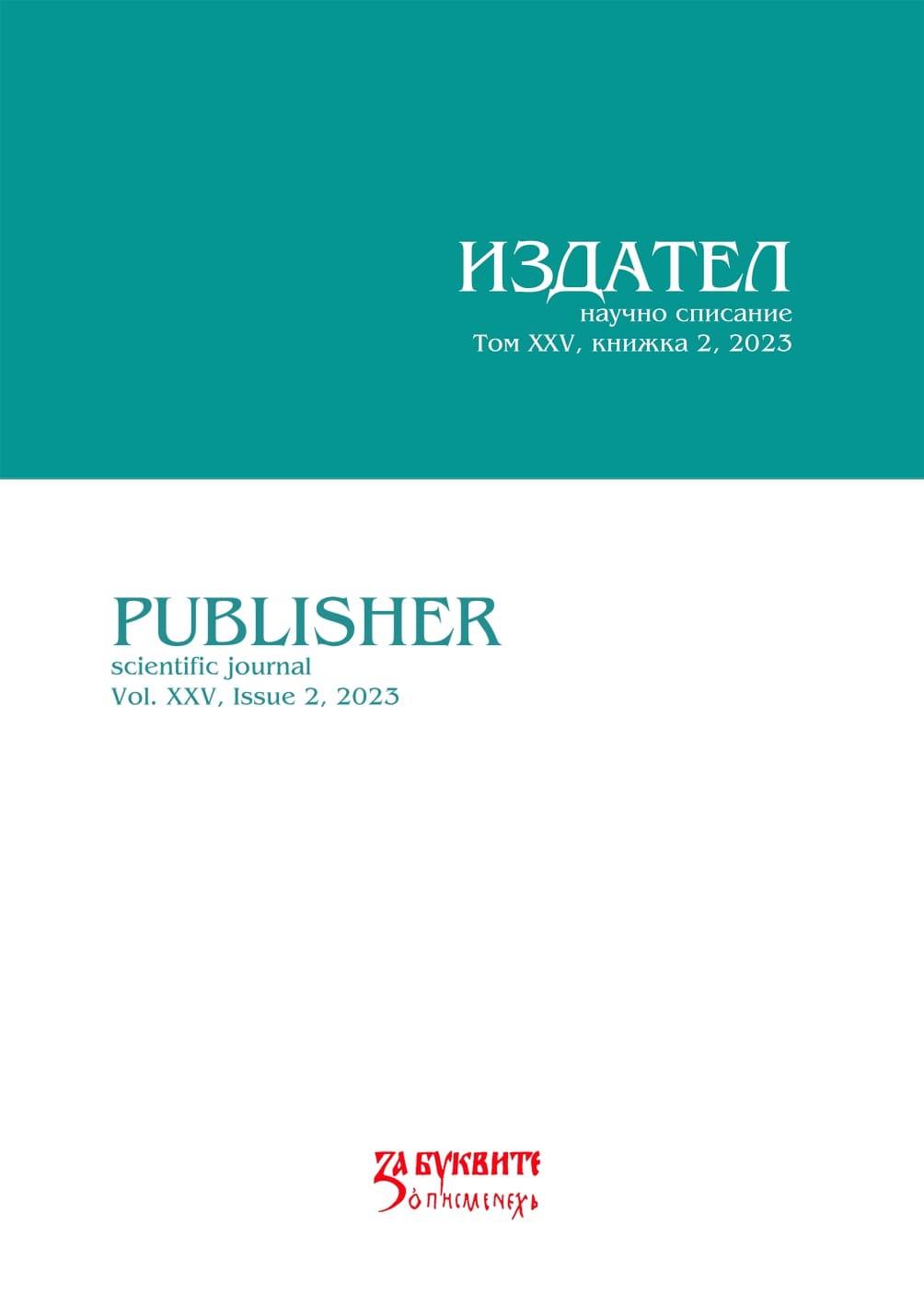
Tourism found one of its earliest forms in the long journey sunder taken by noblemen to various parts of Europe. Called “The Grand Tour”, they began in the 16th century and flourished in the 17th and 18thcenturies. The term “Grand Tour” was first used in 1670 but became widespread in the 18th century, especially after 1749 when Thomas Nugent's four-volume guidebook made it the title of a book. This paper traces the place of libraries along the routes described in that work. The object of the study is the libraries, and the subject is their place and importance through the eyes of the European traveler of the era that marked the birth of modern tourism.The paper aims to argue for the potential of libraries as eye-catching destinations, long before the term “library tourism” was coined, and the task is to trace all the libraries described in “The Grand Tour”. It is concluded that an understanding of the value of libraries as visitor attractions is evident from the survey, and the descriptions give a good insight into the solid foundations of library tourism – an uncut diamond with huge tourism potential.
More...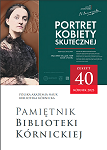
W latach 2000-2007 byłem wydawcą Austriackiej bibliografii retrospektywnej (Österreichische Retrospektive Bibliographie), publikowanej w czterech seriach: Druki austriackie (monografie) od r. 1461, (Österreichische Drucke (Monographien) 1461 ff.); Gazety austriackie 1492–1945 (Österreichische Zeitungen 1492–1945); Czasopisma austriackie (Österreichische Zeitschriften 1704–1945) oraz Bibliografie specjalne (Spezialbibliographien). Łącznie ukazało się 8 tomów, a kolejne są planowane
More...
Pracownia Fotograficzna Biblioteki Kórnickiej została utworzona w 1992 r.; swoją siedzibę znalazła w pomieszczeniach nowo wybudowanego magazynu. Organizację pracowni powierzono Zdzisławowi Nowakowskiemu, który w latach 1975–1992 kierował Pracownią Fotograficzną Ośrodka Informacji Naukowej poznańskiego oddziału PAN. Biblioteka przejęła z Ośrodka sprzęt potrzebny do wykonywania mikrofilmów. Były to kamery mikrofilmowe DOKUMATOR DA V (z 1975 r., produkcji NRD), maszyna do wywoływania taśmy mikrofilmowej DEIGHTON oraz typowe wyposażenie laboratoryjne niezbędne do powiększeń fotograficznych. W późniejszych latach stopniowo unowocześniano pracownię; zakupiono lampy studyjne, stół bezcieniowy do fotografowania martwej natury oraz urządzenie do reprodukcji marki KEISER.
More...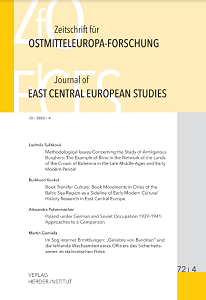
In recent decades, book archaeological studies have shown that Early Modern book movements in the Baltic region were particularly pronounced at the time of the Lutheran Reformation. In view of the movements of a Melchior Hofmann, a Johannes Block, a Nikolaus Russ or a Sveno Jakobi, their handwritten entries point fragmentarily to the confessional affinities of their owners, but above all to the connections of former networks that had existed between the merchants, craftsmen and clergymen of the Hanseatic cities, and that determined the ruling, scientific and economic-political interrelationships of that time. Books of the sixteenth century testify not only to an enormous mobility of their owners, but also to forms of cultural appropriation between individual appreciation, tradition, or antiquarian interest which emerged from the beginning of the Early Modern period and which brought books from different printing places, binding places and contexts of use into the libraries of the Hanseatic cities. Provided that this is the case, one can certainly speak of a book transfer culture and make it a topic within Early Modern cultural history research, which concerns regions of East Central Europe in particular.
More...